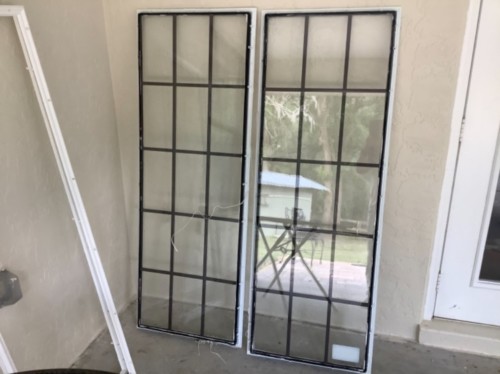Little Known Questions About "The History and Evolution of Double Hung Windows".

Dual put up home windows are a well-known style component in several houses throughout the world. They have been all around for centuries and have undergone substantial improvements over time. In this write-up, we are going to discover the record and progression of double put up windows, from their beginnings to their modern-day design.
Origins of Dual Hung Windows
The sources of dual dangled home windows can be mapped back to England in the 17th century. Full Article -known examples of these styles of home windows were discovered in the properties of well-off English aristocrats, who used them as a means to increase air flow while maintaining personal privacy and surveillance.
The layout of these very early dual hung home windows was relatively basic - they comprised of two waistbands that could be relocated up and down individually. The waistbands were kept in location through ropes or chains that worked over pulleys at the best of the frame. Through taking on these ropes or chains, property owners could possibly adjust the setting of each sash to handle airflow.

Over opportunity, double hung home windows became a lot more well-known throughout Europe and inevitably helped make their way to North America along with early inhabitants.
Development of Dual Hung Windows
In North America, dual hung windows swiftly gained popularity due to their versatility and ease-of-use. As modern technology state-of-the-art, thus did the style and functionality of these types of home windows.
One primary development in the progression of double dangled windows was the intro of weights. Instead of depending on ropes or chains to store each waistband in spot, counterweights were set up inside vacant networks on either edge of the structure. These weights delivered a smoother function for opening and closing each sash.
An additional crucial development was the usage of springtime balances instead of counterweights. Springtime harmonies supplied an also smoother function than weights because they enabled for extra accurate management over each waistband's movement.
In add-on to improved functions, innovations in components also added to changes in double installed window design over opportunity. Very early versions were usually helped make coming from wood, but as innovation boosted, other materials such as vinyl and light weight aluminum started to be used.
Modern-Day Dual Hung Windows
Today, dual hung home windows are largely utilized in both home and commercial structures. They proceed to be prominent due to their flexibility, energy efficiency, and traditional aesthetic.
Modern-day dual installed home windows feature a array of concept remodelings that create them less complicated to utilize and extra energy-efficient than ever previously. For example, numerous modern-day layout consist of weatherstripping around the framework and sashes to prevent air leakage. This may aid decrease power costs by always keeping warmed or cooled air inside the frame.
Another modern-day renovation is the addition of tilt-in waistbands. This permits homeowners or maintenance employees to simply clean both edges of each sash without having to get rid of them coming from the structure.
Conclusion
Dual hung windows have come a long method since their beginnings in 17th-century England. Over opportunity, they have progressed from simple concept along with ropes and chains to advanced systems that include counterweights, spring season balances, and other state-of-the-art component.
Despite these improvements, however, the fundamental principle responsible for double installed windows continues to be the very same - two separately moving sashes that permit for raised ventilation while keeping privacy and surveillance. And along with proceeded developments in products and modern technology, it's very likely that we'll view even even more improvements in dual hung home window layout in the years ahead.
